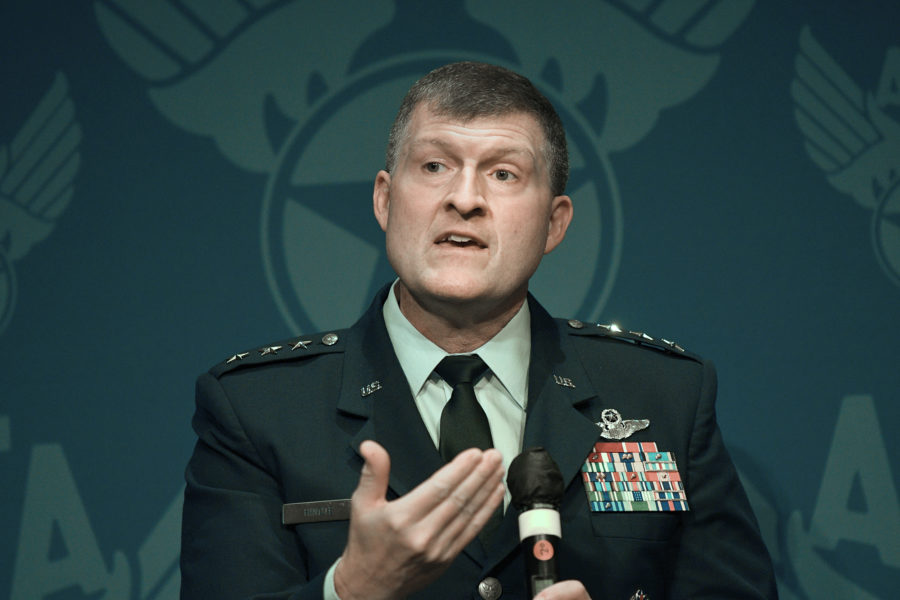Until the Air Force can make the changes it wants in the fiscal 2024 budget and beyond, it isn’t a force “that wins,” Air Force Futures director Lt. Gen. S. Clinton Hinote warned the Senate Armed Services airland subcommittee—and without action, the service’s hoped-for transformation could “fall off the rails.”
Hinote, presenting his final testimony in Congress before capping a 35-year career, said the Air Force is at an inflection point and must break from prioritizing “fight tonight” forces to invest in future capabilities. Until that happens, USAF risks losing a peer fight, he said.
In the April 26 hearing, Hinote said he feels a “sense of urgency to push the changes that we need.”
“For too long, we have privileged current risk at the expense of future risk,” Hinote said, adding that too often that future risk is treated as theoretical, rather than a hard-nosed appraisal of the threat.
“What it really means is that we are not handing off ‘an Air Force that wins’ to the next generation,” he said. “I’m not OK with that. And I know you aren’t, either.”
Hinote said the budget now before Congress “helps us get to the change that we need. It’s not perfect—no budget is—but due to the leadership of Secretary [Frank] Kendall and Gen. [Charles Q.] Brown, we are seeing real progress in our operational imperatives and force design.”
While many of the headlines around the budget have focused on its divestment of older, less capable platforms, Hinote said it goes well beyond that.
“There is real and transformational change in this budget,” Hinote said. “We are shifting major resources to the new capabilities that will be used in new ways. For years, we have needed a change-oriented budget. This is it.”
As the leader of Air Force Futures, Hinote noted his organization’s role “is to be the voice of tomorrow’s Airmen, to advocate for the capabilities and concepts the next generation of leaders will need to be successful.” To get there, “we will have to change, and change is hard,” he said.
Wargaming various future force structures has been a staple of his efforts for several years, Hinote said, and the systems and organizational changes USAF is implementing are the only way to win, he said. These include Collaborative Combat Aircraft, future air superiority capabilities, and Agile Combat Employment, he specifically noted.
More generally, he pointed out that serving under three different presidential administrations, “I found it remarkable that they arrived at three common conclusions”:
- China “is the primary challenge”
- The mission is to deter, and deterrence rests on “being ready to fight and win”
- Change is necessary to keep up with the threat
China, he added, is “a worthy adversary” and its rapidly-advancing military capabilities must be taken seriously.
Asked by Sen. Tom Cotton (R-Ark.) what he wants to “get off his chest” before leaving the service, Hinote said “I’ve watched this … story unfold, and we’ve known we needed a change for many, many years, and it feels like we’re finally—maybe—getting to a pivot point right now.
“That’s exciting, but it’s also scary, because it could come off the rails right away. We don’t want that, so, I’m cautiously optimistic and I’ll be cheering from the sidelines,“ Hinote concluded.
